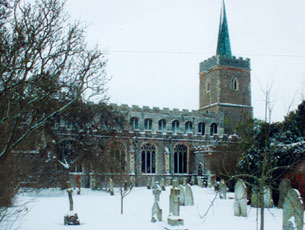

Nayland Nayland contains over 100 listed buildings, many of them timber framed and dating back as far as the mid 13th century. The golden age of building in the village was in the 14th to the late 16th centuries. In a 1522 tax survey Nayland was ranked 42nd in the list of richest towns in the country. Only Lavenham, ranked 13th on the same basis, possessed more wealthy cloth merchants. Nayland was 3rd in the Babergh Hundred Muster of 1552 behind Lavenham and Boxford. With the decline in the cloth industry during the late 16th and 17th centuries, other activities such as white and brown soap making, tanning, milling, malting and brewing became more important. From this time and well into the 18th and 19th centuries, some of the timber-framed buildings were given fashionable brick or plaster facades. This may have helped to preserve what is considered a nationally important collection of both high status merchants’ houses and lower status artisans’ dwellings. The economic activity of the village continued with the river being made navigable from Sudbury to Manningtree as a result of the passing of the Stour Navigation Act of 1705. Coal and other goods were carried upstream by barge, and chalk and bricks from pits near Sudbury were brought downstream in return for onward transit to London. Along the river the barges also picked up flour from the water mills, including Nayland mill which was an important source of employment for the village.
|
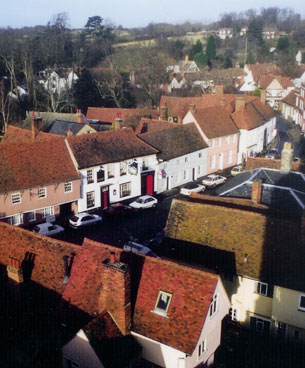 View of High Street from St James Church |
Wiston Wissington or Wiston stretches over a wide area of country with scattered groups of dwellings joined by narrow roads. Its only unity came from the Norman church, standing at the far south of the parish. It is a much older parish than Nayland because it is certain that the parish of Wiston was in existence when records of parishes began. Until comparatively recent times its Rector’s stipend was more than double that of the Nayland parson who had to deal with a population almost 4 times as great. It must have formed part of the large Manor of Nayland at Domesday, which stretched across the Stour but, like both the Horkesleys, it is not named in the survey.
|
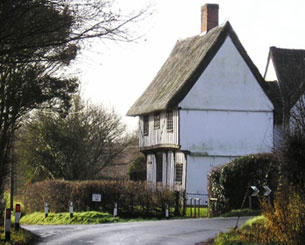 Pound House, Wiston |
Some of the Principal buildings in Nayland and Wiston St. James’ Church, Nayland
|
|
Alston Court
|
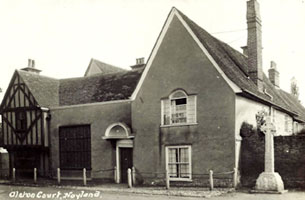 |
The Old Guildhall, High Street photo 1960s |
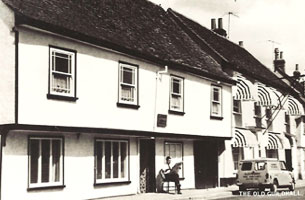 |
The Queen’s Head Inn, High street A fine mid 16th century rear parlour survives intact and includes a long clerestory window against the later mill stream. In the courtyard behind the rear parlour lies a 15th century jettied structure which contains two first floor rooms originally accessible only by doors in the front wall above the jetty, which may represent an unusually early lodging range. photo before 1922 |
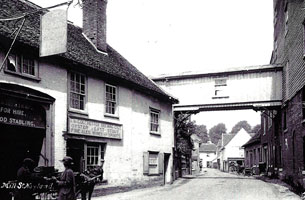 |
The Mill The Mill was first referred to a a Corn Mill in records dated 1674. It was rebuilt in the early 18th century, and then 're-edified' to a five storey structure in 1823 with a gantry over the road to the mill lade. Barges came here to load and unload after the Stour was made navigable in 1705. The top three storeys and the gantry were dismantled in 1922. Later it became the Nayland Electric Light and Power Station, which closed in 1938. After several commercial uses it is now Josephine Interiors with flats on the first and second floors.
|
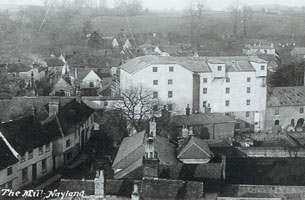 photo c.1900 |
Longwood House, Stoke Road Martha (Patty) Smith, one of John Constable’s aunts lived here.
|
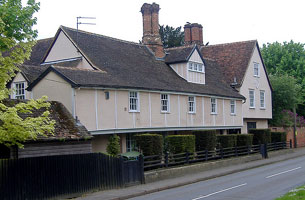 |
Birch Street No. 14, built in the mid 16th century, is a fully floored and jettied timber-framed house with its hall to the left and parlour to the right. Nos. 6-12 These two houses were probably built as a pair of semi detached renters in Wealden form. The exposed timbers of these two early 15th century houses are a useful chronology of changing fashions in timber-framing. The relatively widely spaced studs of the original ends are typical of the late 14th or early 15th century, while the closer studding of the right-hand inserted jetty contains evidence for a projecting oriel window supported on brackets and a clerestory typical of the late 16th century. The thin timbers of the left-hand inserted jetty date from the 18th or 19th century and were not intended to be exposed.
|
 Line drawing by Iris Sebba |
St. Mary’s Church, Wiston
photo 1930s |
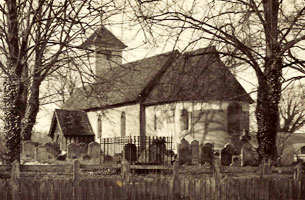 |
Wiston Hall The details of the new building can be found in Soane’s account books in the Soane Museum in London. (Soane Museum Archive Bill Book 4; Journals 1 & 2; Day Books 1791 & 1792)
|
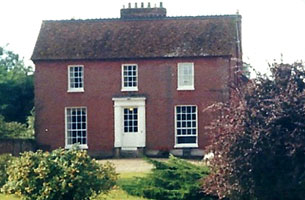 |
Wiston Mill
|
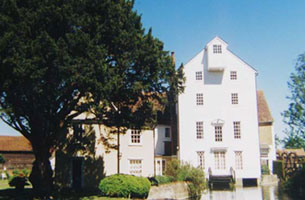 |
Jane Walker Park photo c.1920 |
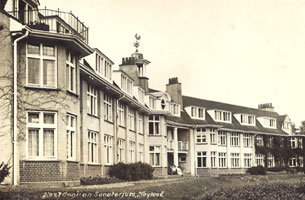 |
Aspects of Parish History |
|
| A selection of articles written by the Village Recorder. | 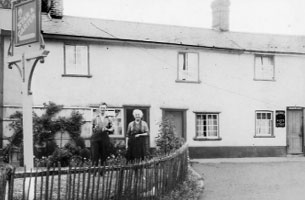 The Star & Garter was a public house until 1984 |
| The High Street Trough (pdf 111Kb) | |
| A Nayland Pub Crawl (pdf 555Kb) | |
| Nayland's Mills (pdf 122Kb) | |
